The NHL is in an unprecedented situation financially, with the salary cap barely rising after next season. Cap space is at a premium as teams try to shed salary by moving out expensive contracts via trade or the expansion draft.
The Arizona Coyotes weaponized their available cap space to accumulate draft capital. They took on the contracts of Andrew Ladd from the New York Islanders, Anton Stralman from the Florida Panthers, and many contracts from the Vancouver Canucks. Not only that, but many teams exposed valuable players to the Seattle Kraken – like the Islanders who lost Jordan Eberle – which was head-scratching.
That’s why it was perplexing – but not shocking – that teams still agreed to overpay players when the free-agent market opened on July 28, and many teams handed out long-term deals like candy. The biggest takeaway from free agency is that teams will regret many of their decisions within a few years.
Here is a list of the biggest winners and losers of free agency:
Winners
These teams came out ahead in free agency by adding the most value to their team while taking into account the financial climate.
1. New Jersey Devils
The Devils won free agency when they signed the biggest fish on the market in Dougie Hamilton. The Devils got a legitimate No. 1 defenseman at a fair price. The important thing is that they didn’t overpay and locked him up for seven years.
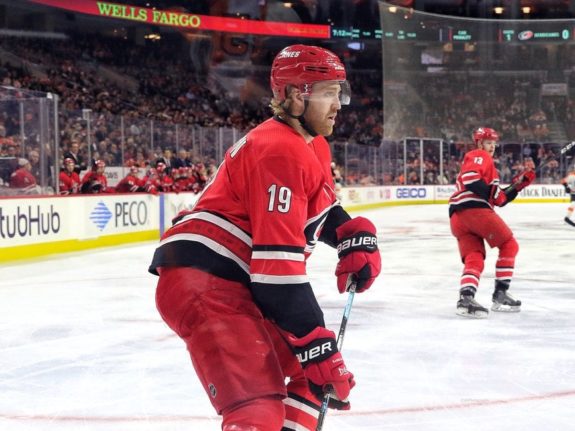
Hamilton is coming off three strong seasons, scoring 42 goals and 121 points in 184 games. He’s the ideal two-way defenseman who can do everything. Not only does he have a good shot, but he drives offense and is strong in transition. It was the perfect deal to help the Devils get to the next level.
I don’t love the addition of Jonathan Bernier at a $4 million price point, but there’s a good chance he will help form a solid tandem with MacKenzie Blackwood and he put up respectable numbers last season. Bernier had a .914 save percentage in 24 starts with the Detroit Red Wings. He saved 1.98 goals more than expected based on the quality of the shots he faced, which ranked 21st in the league.
One of the more underrated moves in free agency was the late addition of Tomas Tatar. His 1.4 wins above replacement ranked 65th among forwards, partly thanks to his ability to drive the offensive play and strong defensive numbers. He’s a top-line talent that doesn’t get enough credit, and he didn’t deserve the treatment he got in the postseason.
2. Toronto Maple Leafs
The Maple Leafs haven’t received enough credit for what they managed in free agency. Sure, they lost Zach Hyman, but that was a necessity because his next contract could have handcuffed their future. So, let’s start with the goalie situation, where the Leafs and Carolina Hurricanes swapped goaltenders.
| Petr Mrazek | .911 SV% | 18.87 GSAx |
Frederik Andersen | .910 SV% | -12.99 GSAx |
Toronto got a clear upgrade in Mrazek. From 2017 to 2020, he has saved 18.87 goals above expected. While that number might be mostly thanks to an unbelievable season in 2020-21, he has been far better than Andersen in that span. Mrazek can be streaky at times, which is a concern, but he still has a strong track record. If there’s one thing to be sure of, it’s that a Mrazek-Campbell tandem should provide a sense of optimism for next season.
The additions of Nick Ritchie, Ondrej Kase, and Michael Bunting are also underrated. They might finally be the missing pieces that push the Maple Leafs over the edge.
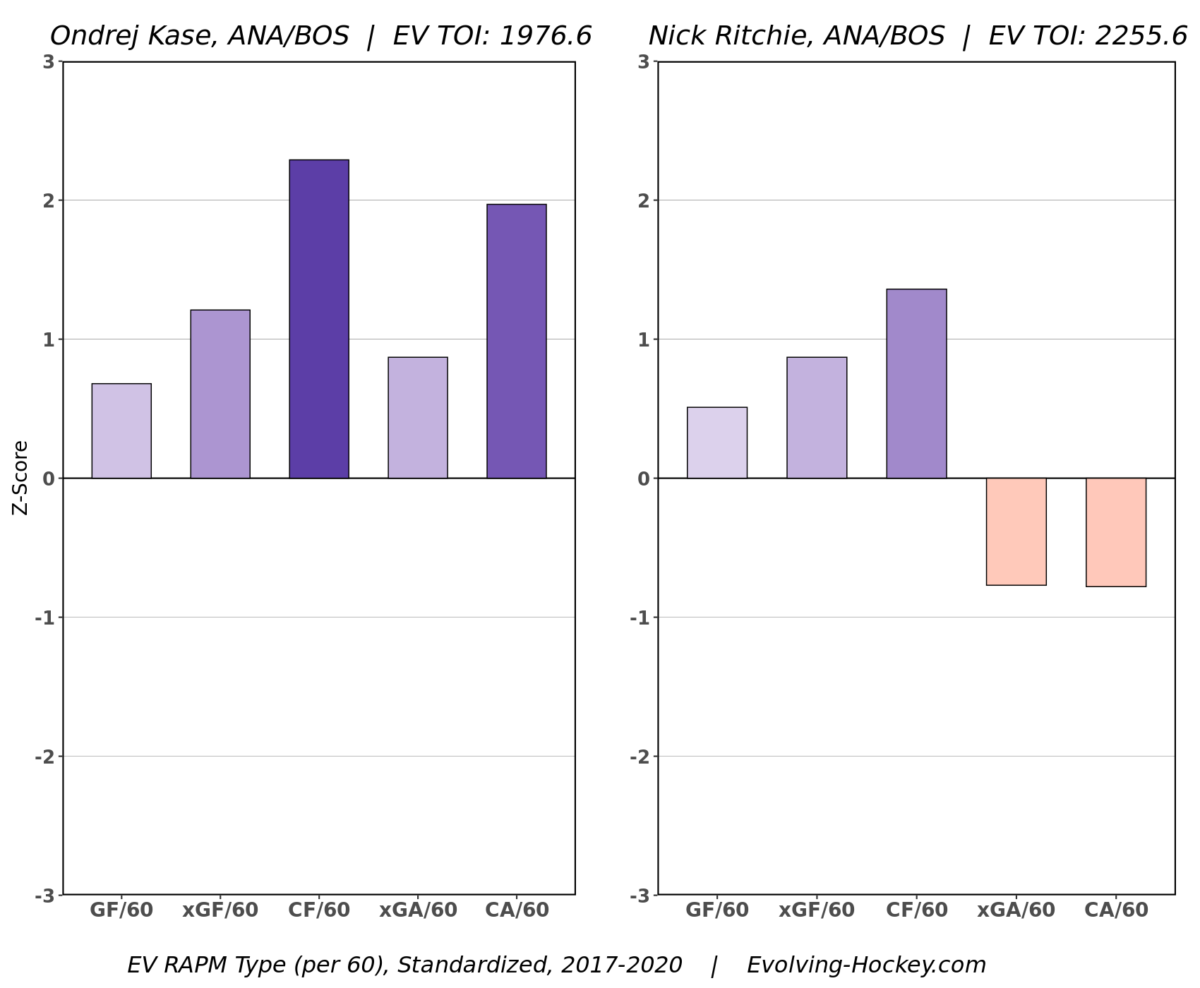
Due to cap space, management was forced to find potential diamonds in the rough. Ritchie and Kase should have a legitimate role in the middle-six next season, and it helps they’re both only 25 years old. With these additions, the Maple Leafs improved their forward corps. Not only will Ritchie bring secondary scoring, but he brings a physical presence that the team was lacking.
There’s even a chance that David Kampf will become a good fourth-line depth piece, which gives the team more options down the middle.
3. Seattle Kraken
While the Kraken overpaid for players in free agency, their improvement after the expansion draft can’t be denied. Jaden Schwartz and Alexander Wennberg will both bring scoring to their top-six. Schwartz didn’t have the best season in 2020-21, but there’s optimism he can regain his 2019-20 peak form. Wennberg flourished with the Panthers this past season, scoring 17 goals. He was worth one win above replacement according to Evolving-Hockey too.
While Adam Larsson and Jamie Oleksiak were acquired via the expansion draft, they were technically signed as free agents with the benefit of early negotiation rights. They are both top-four defensemen, while Larsson proved he has top-pairing upside with the third-highest defensive goals above replacement last season.
The Kraken also added Phillip Grubauer, one of the better options in the league, even if they overpaid the 29-year-old goaltender and gave him more term than they should have. Nonetheless, it solidifies their goaltending tandem.
4. Edmonton Oilers
The Cody Ceci acquisition was almost as puzzling as the contract they handed out. The four-year deal is worth $3.25 million annually, which is way more than he is worth. The deal is a few years too long and a bit pricey, but Ceci is still a reliable third-pairing defenseman who will bring value to the defensive zone. He played decent with the Pittsburgh Penguins last season and was worth 1.2 wins above replacement. This deal likely won’t age well, though.
However, the addition of Zach Hyman will really bolster their top-six and give Connor Mcdavid and Leon Draisaitl another option instead of inserting bottom-six depth players and trying to pry as much value as possible out of them.
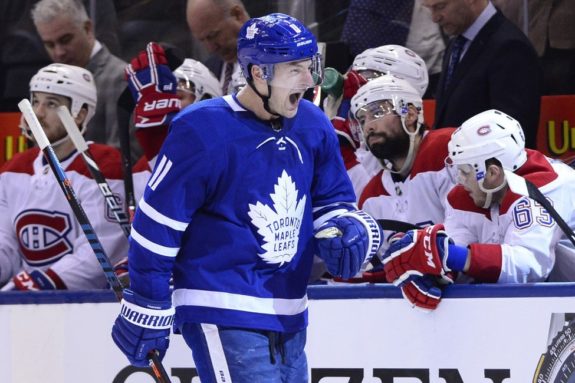
The term is definitely not favorable, but they got a bit of a discount on the average annual value. That said, they desperately needed to add a top-line forward to the mix.
I really like what the Oilers added depth-wise too with Warren Foegele, Derek Ryan, and Brendan Perlini. They will add some secondary scoring to a team that needs more offense from the bottom of the lineup.
The Tyson Barrie extension was actually good considering the contracts handed out to defensemen.
| Player | AAV |
| Alex Goligoski | $5 Million |
| Jamie Oleksiak | $4.6 Million |
| Tyson Barrie | $4.5 Million |
| Jake McCabe | $4 Million |
| Adam Larsson | $4 Million |
| Ryan Suter | $3.65 Million |
| Alex Edler | $3.5 Million |
| David Savard | $3.5 Million |
| Cody Ceci | $3.25 Million |
| Travis Hamonic | $3 Million |
Considering the contracts that were given out in a similar price range, we can give credit to the Oilers for retaining their unrestricted free agent (UFA) at that price point. Barrie is a defensive liability, but he’s one of the best offensive defensemen in the league and still brings immense value.
5. Minnesota Wild
Considering how active the Wild were in free agency, it’s surprising that they signed four players without making any mistakes. Alex Goligoski is a bit pricey at $5 million, but unlike most of the defensive deals, they signed him to a one-year deal that will carry less risk.
The Wild also added Dmitry Kulikov and Jon Merrill to team-friendly deals hoping they become a formidable third pairing. Management did a good job and solidified their defensive core without overpaying, and especially without handing out multi-year deals that will become a burden for many teams in the near future.
Frederick Gaudreau also came cheap on a two-year deal, and if his sample size with the Penguins last season is an indicator of what the Wild will get over the life of the contract, this will become a very underrated signing.
Losers
These teams came out as the losers of free agency by overpaying players or making questionable signings.
1. Carolina Hurricanes
The biggest reason the Hurricanes are listed here is that they lost Hamilton. It is very confusing that they didn’t re-sign one of the best defensemen in the league. Considering he signed a fair deal with the Devils, we might assume that Carolina low-balled him, which they will regret.
They added Josh Leivo and Derek Stepan upfront which should help, but their defensive additions of Ian Cole and Anthony Deangelo are head-scratchers. Why spend $4 million on two depth defenders rather than paying $8-9 million for one of the league’s elite?
After trading Alex Nedeljkovic, they allowed Mrazek to test the market, which also didn’t make much sense since they ended up paying Andersen more money, despite that he’s a downgrade after Mrazek.
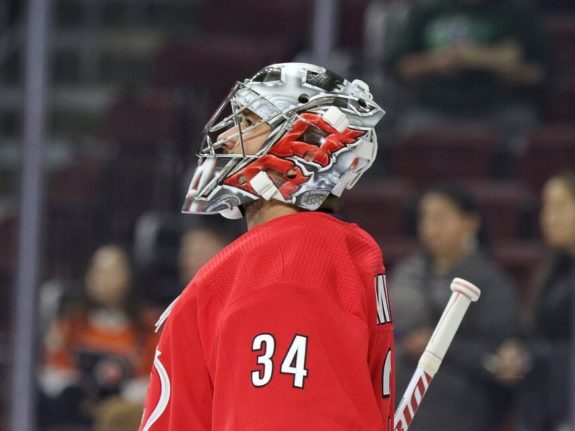
They did get Antti Raanta as their backup, which was nice, but it only added to their questionable decisions this offseason. Why pay $6.5 million for a downgrade in net when they could have kept one of the best tandems in the league at roughly the same price?
2. Calgary Flames
The reason the Flames land on this list is because of their decision to sign Blake Coleman to a six-year deal worth $4.9 million annually. While I won’t discredit how valuable he was to the Tampa Bay Lightning, he is still a third-line winger and shouldn’t be getting paid this much. Signing a depth player – even one of the best in the league – to a long-term deal will never age will, especially at his pricey cap hit.
The length of this deal makes it significantly worse than just overpayment. While it might be fine for the first couple of seasons, Coleman is projected to be closer to a replacement-level forward in the second half of the contract. This isn’t a good signing for the Flames, who have Matthew Tkachuk and Johnny Gaudreau on the last season of their deals to consider. The Flames are far from contenders, which makes this signing even more questionable.
3. New York Rangers
Some might argue that the Rangers made an even worse signing than the Coleman deal. They signed Barclay Goodrow to a six-year deal worth $3.64 million annually. He was the other part of the Lightning’s formidable third line.
There’s no doubt that he is a very important and valuable fourth liner, but he doesn’t bring as much offense to the table as Coleman. That makes him a valuable fourth-line player with little offensive upside.
4. Montreal Canadiens
Both Phillip Danault and Tomas Tatar tested the open market and signed with other teams, leaving the Canadiens with huge holes upfront. They added Mike Hoffman, but he doesn’t provide much value at 5-on-5, which they lost when Danault and Tatar departed. So, they’ve acquired Hofmann’s finishing ability and power-play excellence, but that’s about it.
The depth acquisitions in Cedric Paquette and Mathieu Perreault don’t do much either. The term and cap hit for David Savard are pricey and likely won’t age well, and he has already shown signs of regression over the past two seasons. He still provides defensive value, but there shouldn’t be much optimism for the second half of that contract.
5. Boston Bruins
Signing Linus Ullmark to a four-year deal worth $5 million annually is questionable. He has allowed 24.11 more goals than expected over the past three seasons – the 13th worst mark in the league during that span. He has a .911 save percentage in 91 starts during that period. Sure, he improved a little last season, but this is a very risky addition.
The Bruins did a great job of re-signing their UFAs Taylor Hall and Mike Reilly to team-friendly contracts. After that, they turned around and signed Nick Foligno to a lucrative multi-year deal.
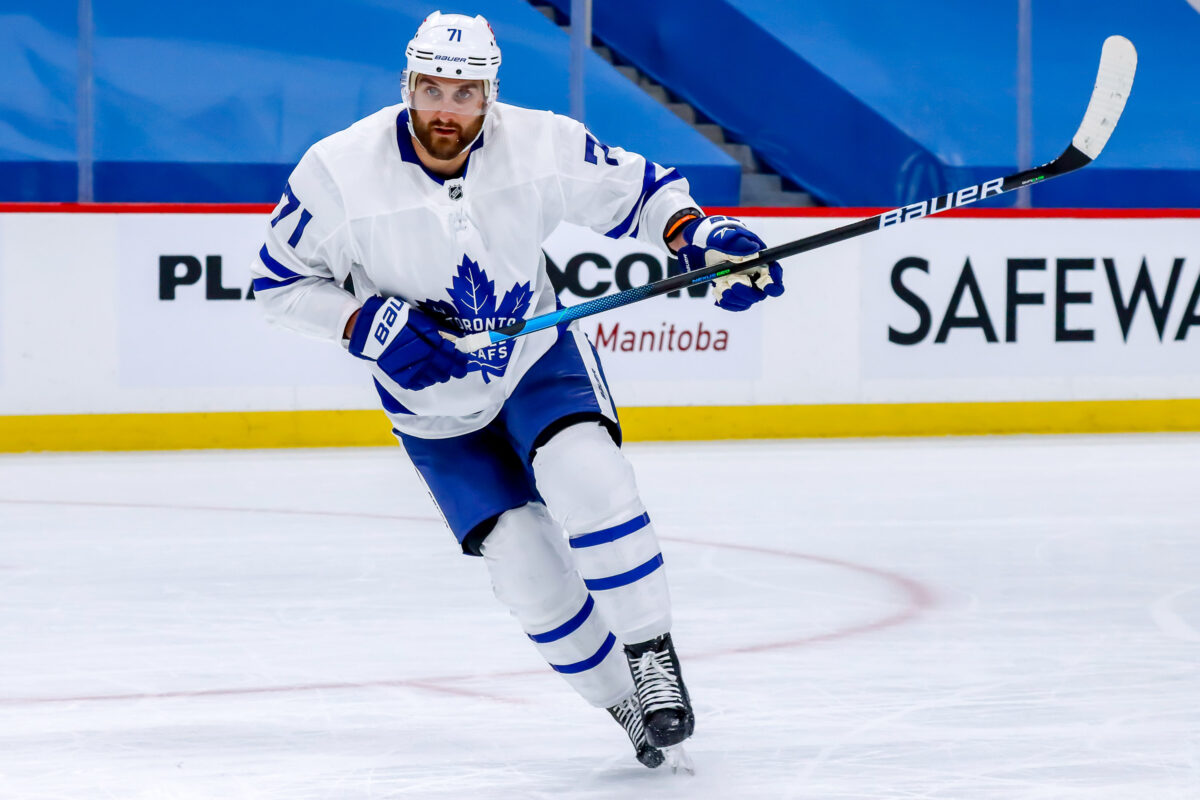
Foligno was replacement-level this past season and provided negative value to the Columbus Blue Jackets and Maple Leafs. His game hasn’t been the same for a few seasons, so this is a very risky signing.
The Erik Haula and Derek Forbort signings weren’t great either. Haula hasn’t been the same player since his departure from the Vegas Golden Knights, and Forbort is nearly replacement-level, so the only thing he brings to the table is physicality. There’s just too much uncertainty and risk that comes with these acquisitions.
Final Thoughts
As always, there were some good and bad deals handed out in free agency. Yet, this all happened despite the financial landscape and a flat cap moving forward. There were some winners and losers; some more apparent than others. The surprising thing is that there are still some very good cheap depth options remaining in free agency.
All Data Via Evolving-Hockey, Natural Stat Trick & Hockey-Reference